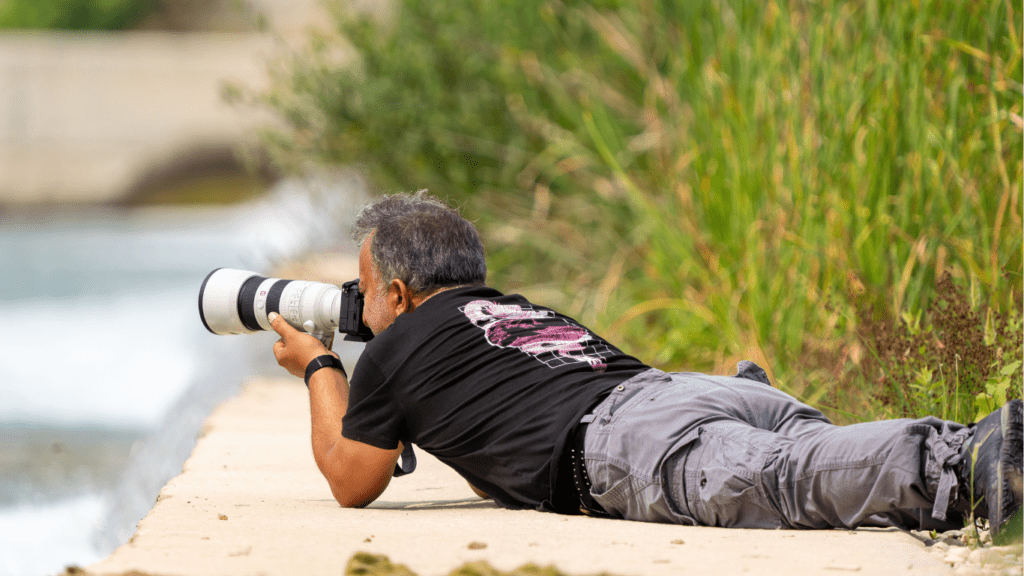Photography’s a world where creativity meets technology, constantly evolving with new trends and innovations. I’ve always been fascinated by the minds behind the lens—those who transform moments into timeless art. What inspires them? How do they adapt to the ever-changing landscape of visual storytelling?
Overview Of “Behind The Lens”
“Behind the Lens” explores photography’s dynamic evolution through insights from iconic photographers. I examine how they navigate technological advancements and maintain their unique artistic visions. By sharing their experiences, these artists shed light on their creative methodologies and professional adaptability.
Key discussions include trends like AI-assisted editing, where photographers redefine efficiency and precision, and the resurgence of film photography, which emphasizes texture and authenticity. These emerging areas reveal a blend of nostalgia and innovation shaping modern photography.
Throughout the series, I emphasize how these trailblazers integrate new tools without losing their creative essence. By understanding their approaches, I showcase the balance between traditional techniques and contemporary advancements in visual storytelling.
Exploring Emerging Trends In Photography
Photographers continue to push boundaries, adapting to rapid technological changes and redefining artistic expression. Emerging trends influence both techniques and the stories conveyed through images.
Key Themes Discussed
I noted several recurring themes in conversations with iconic photographers. Many focus on sustainability, integrating eco-conscious practices like reusing materials for set design or selecting environmentally responsible printing methods. Authenticity also dominates discussions, with artists emphasizing unfiltered storytelling and meaningful representations of culture or individuality. Another highlighted theme is inclusivity, with photographers prioritizing narratives that represent underrepresented communities.
Impact Of Technology On Photographic Art
- Technology transforms photography, making tools like AI and machine learning central to creative processes.
- AI-driven editing supports routine tasks like color correction and image enhancement, freeing more time for concept development.
- High-resolution smartphone cameras bring accessibility, enabling anyone to capture professional-quality images.
- Virtual reality offers new dimensions in visual storytelling, allowing creators to immerse viewers in 360-degree experiences.
- However, I see many artists stress the importance of retaining their signature style, ensuring technology enhances rather than overshadows their creativity.
Insights From Iconic Photographers

I’ve gathered exclusive thoughts from renowned photographers who share their perspectives on creativity and evolution in photography. Their insights uncover how they blend artistry with emerging trends.
Artistic Philosophies And Inspirations
Iconic photographers prioritize storytelling as the essence of their craft. Many focus on capturing raw emotions, valuing authenticity over perfection in their work. For example, Alex Webb emphasizes the interplay of light and color to convey mood, while Annie Leibovitz integrates personal connections with her subjects to create compelling narratives. Inspirations often stem from diverse sources, including:
- literature
- history
- cultural shifts
Some, like Steve McCurry, attribute their vision to immersive travel experiences that deepen their understanding of human connections.
Challenges In The Evolving Photography Landscape
The rapid pace of technological innovation poses both opportunities and difficulties. Adapting to AI tools and software, while maintaining a distinct artistic voice, remains a shared concern among many. Photographers like Joel Meyerowitz highlight challenges in preserving spontaneity when AI-assisted editing becomes prevalent. Sustainability is another significant issue, as production methods evolve. Chris Jordan emphasizes the need to balance ethical practices with creative demands. Additionally, increased accessibility through smartphones creates fierce competition, making it crucial for professionals to maintain originality and depth in their visual storytelling.
The Evolution Of Photography Through Decades
Photography has transformed significantly over the years, driven by technological advancements and shifting artistic priorities. Insights from iconic photographers shed light on how historical trends and new possibilities shape this dynamic art form.
Historical Perspectives Shared By Photographers
Many photographers reflect on the analog era when manual processes defined the craft. For example, the labor-intensive darkroom techniques of the 20th century required precision and patience, making the creation of each image a meticulous endeavor. Icons like Dorothea Lange embraced documentation through black-and-white film, capturing raw human stories during challenging times like the Great Depression.
The transition to digital in the 1990s marked a seismic shift. Camera sensors replaced film rolls, and instant previews became standard, redefining workflows. Photographers like Steve McCurry navigated this change, blending digital precision with the depth of analog aesthetics. This shift also democratized photography, making it accessible to a broader audience.
Predictions For Future Trends
Looking forward, many photographers anticipate AI integration to become even deeper, with tools learning individual styles to automate repetitive tasks. Some predict that AI-driven personalization could empower artists to focus more on storytelling rather than technical adjustments. Virtual reality and augmented reality are also expected to create immersive storytelling experiences, offering audiences new ways to interact with photographic art.
Sustainability remains a growing priority. Eco-friendly equipment and renewable workflows dominate conversations among photographers seeking to reduce their environmental impact. Meanwhile, the inclusivity movement continues to influence narratives, ensuring diverse perspectives are represented across visual mediums.



